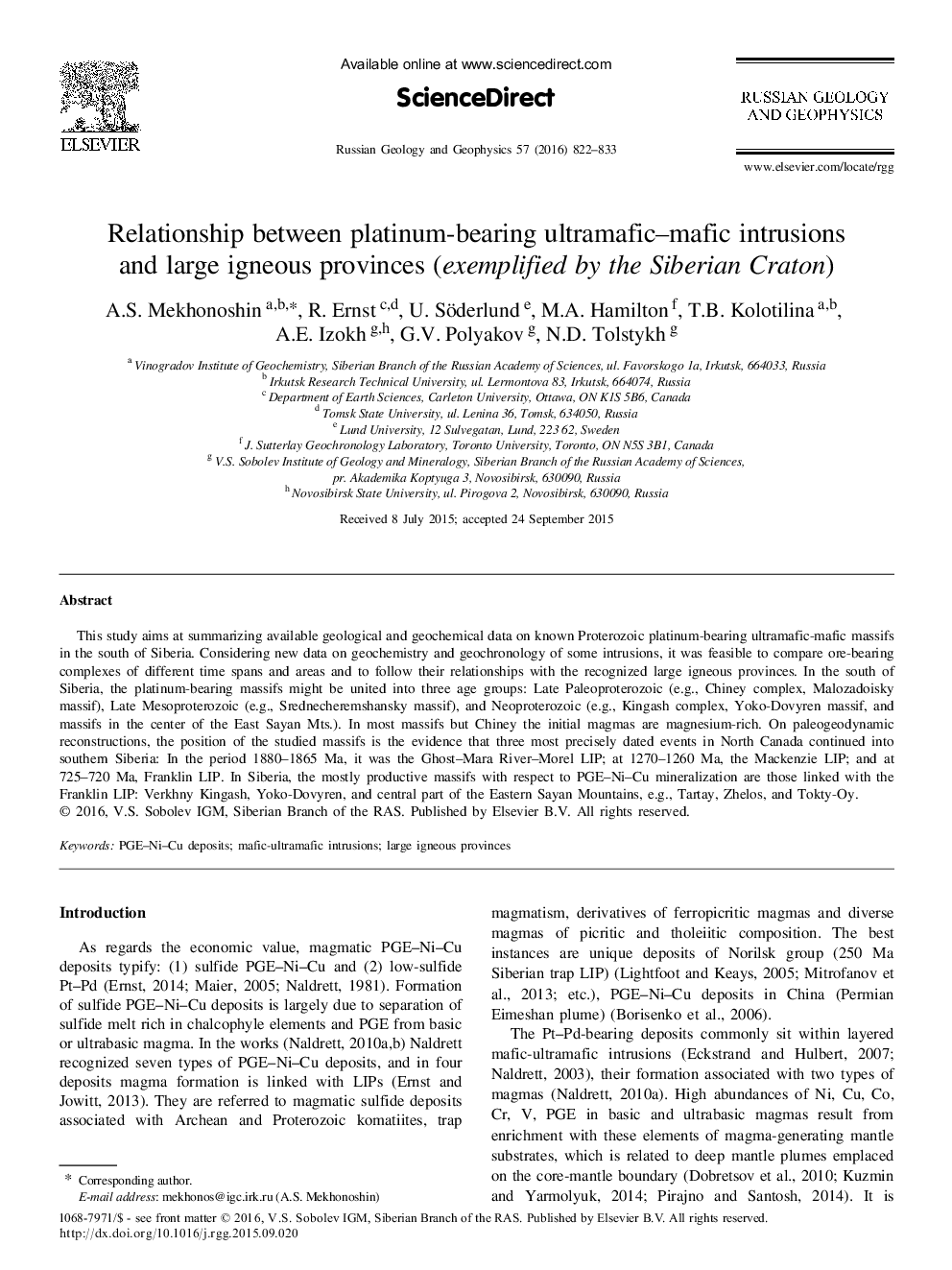| Article ID | Journal | Published Year | Pages | File Type |
|---|---|---|---|---|
| 4737236 | Russian Geology and Geophysics | 2016 | 12 Pages |
This study aims at summarizing available geological and geochemical data on known Proterozoic platinum-bearing ultramafic-mafic massifs in the south of Siberia. Considering new data on geochemistry and geochronology of some intrusions, it was feasible to compare ore-bearing complexes of different time spans and areas and to follow their relationships with the recognized large igneous provinces. In the south of Siberia, the platinum-bearing massifs might be united into three age groups: Late Paleoproterozoic (e.g., Chiney complex, Malozadoisky massif), Late Mesoproterozoic (e.g., Srednecheremshansky massif), and Neoproterozoic (e.g., Kingash complex, Yoko-Dovyren massif, and massifs in the center of the East Sayan Mts.). In most massifs but Chiney the initial magmas are magnesium-rich. On paleogeodynamic reconstructions, the position of the studied massifs is the evidence that three most precisely dated events in North Canada continued into southern Siberia: In the period 1880-1865 Ma, it was the Ghost-Mara River-Morel LIP; at 1270-1260 Ma, the Mackenzie LIP; and at 725-720 Ma, Franklin LIP. In Siberia, the mostly productive massifs with respect to PGE-Ni-Cu mineralization are those linked with the Franklin LIP: Verkhny Kingash, Yoko-Dovyren, and central part of the Eastern Sayan Mountains, e.g., Tartay, Zhelos, and Tokty-Oy.
